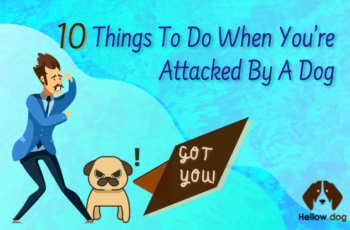Last updated:
Emergencies with pets can be scary and unnerving. Whether it’s a sudden illness, injury or other medical problem, having a plan can be the difference that saves your furry friend! To help you out, we’ve compiled a list of the best tips to prepare for an emergency vet visit.
What to Do in Case of an Emergency
One tip to help you prepare for an emergency with your pet is to make a list of local veterinarians in your area. For example, if you’re located in Austin, you’d want to know the best vets in Austin, Texas.
Find centers open 24 hours that can treat an emergency across the board. You should have their phone numbers saved in your phone, as well as written down in a place at home that is easy to find.
1. Create a Pet First Aid Kit
The great thing about a first-aid kit is that it comes in handy during times of emergency. Common first-aid items include gauze pads, adhesive tape, antiseptic wipes, digital rectal thermometer, small scissors, tweezers or tick removal tools, and a pet handbook with first aid information. Keep this kit in a specified location that all family members are aware of.

2. Understand Serious Symptoms in Your Dog
Being able to recognize when our furry friends are ill or in distress is important. Some common distress signs are indicative of a more serious issue and could meet the red flag criteria for a health-related emergency.
Some of these serious symptoms include difficulty breathing, severe bleeding, sudden collapse or weakness, ingestion of toxic substances, prolonged vomiting, diarrhea and seizures. Learn the differences between these distress signals so you can do something on the spot if necessary.
3. Learn Pet CPR and First Aid Basics
Knowing the basics of CPR can make a huge difference in your dog’s chance of survival. Knowing a few tips for basic pet CPR and first aid might help stabilize your dog until you can get them to the emergency vet. Most veterinary clinics and organizations provide classes or online resources to educate dog owners and pet parents.
4. Prepare a Dog Emergency Plan
All pets should have their own emergency response plan just like you probably have for your family. Establish who will care for your pup if you become unable. Have a list of instructions ready to go. Include details like your veterinarian’s contact info, medical history, medications your dog will need to take, diet restrictions…etc.

5. Keep Calm and Act Quickly
See also

It’s natural to feel panicked during times of emergency, but when you remain calm it encourages your dog to also remain relaxed. A calm dog can help to de-escalate the situation. Assess the situation, perform any simple first aid that you can manage, and take your pet immediately to the emergency vet. Call the vet ahead of time if applicable so they can be ready to assist.
6. Know The Risk For Local Hazards
Just like any city, there are a great deal of environmental hazards that could potentially impact your dog. Know the local hazards and be aware of extreme weather risks like flash floods, or potential wildlife encounters . Ensure that you are safe and be ready to rapidly intervene in case of malfunction.
7. Annual Veterinary Appointments and Wellness Care
Prevention is your best friend when it comes to caring for your dog. Schedule frequent and routine vet visits to stay on top of your dog’s health and have a wellness plan in place. Schedule those yearly exams and vaccinations, but also see your vet for anything else that concerns you.
Author Byline

Saram Pervaiz
Check out UrgentVet Crestview Vet Clinic in Austin, Texas. Embark with Saram on a journey to satiate your wanderlust! Explore hidden gems, savor local flavors, and dive into the vibrant cultures around the globe. See the magic that happens when you follow the compass of curiosity.


